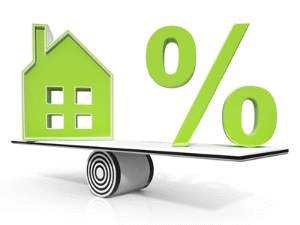Growth in house prices to fall significantly next year
House price inflation is expected to fall back to single-digit levels next year.
Monday, September 27th 2021, 11:32AM  1 Comment
1 Comment

ASB says higher mortgage rates will be a gamechanger but most of their impact will not be felt until next year.
Chief economist Nick Tuffley says two of the biggest supports for house prices of the past two years will flip and become restraints.
“First, the rise in mortgage interest rates has begun and, in time, will tilt momentum.
While the RBNZ delayed the start of its tightening cycle it has been quick to assert it will kick-off if/when the Covid fog clears a little.
“About three quarters of mortgages nationwide are due to refix over the coming 12 months and the Reserve Bank clearly doesn’t want the mortgage curve to droop.”
The RBNZ has so far been unwavering in its intention to lift the OCR back towards neutral levels over the coming few years.
“Allowing for the usual lags, this turning in the mortgage rate cycle points to a clear change in house price momentum over the first half of 2022,” says Tuffley.
Supply dynamics
A change in the supply picture will also remove some of the support for house price increases next year.
The combination of slowing population growth due to the closed border and the recent frenzied pace of residential construction should, finally, put paid to the supply airpocket that’s been a feature of the market this year.
The fact there is now overbuilding relative to population growth has wrong-footed a few market watchers into expecting an imminent change in the housing cycle. There are lags involved.
In Tuffley’s view, 2022 will be the year these shifting dynamics are reflected in a slower rate of house price inflation.
“This is ultimately a good news story to the extent the long-running housing shortage is materially reduced.”
RBNZ moves
Recent Reserve Bank rhetoric has betrayed increasing frustration at the stubborn strength of housing demand and, in particular, continued “risky” lending.
Existing levels of house prices have now been officially blasted as “unsustainable”. The RBNZ looks set to soon walk the talk and introduce additional macro-prudential tools.
First cab off the rank will be a reduction in the speed limit on high LVR lending to owner-occupiers, to 10% of new lending from 20%.
The effect here won’t necessarily be material as new lending to this group is already tracking at around 10-11% of the total.
The central bank is also looking closely at debt-to-income (DTI) restrictions. These are a potentially more powerful tool, but it all depends on where the DTI limit is set.
The RBNZ has been charged with avoiding negative impacts on first home buyers, the group that tend to have the highest DTI.
“So setting DTIs at a level that avoids such impacts while still getting some ‘bite’ will be a challenge,” says Tuffley.
“Whatever the exact policy mix, the take-home message is that the RBNZ is serious about changing the momentum in the housing market.
“And if the fundamentals – rising mortgage rates and increasing supply – don’t do it, then the RBNZ will take increasingly aggressive action.”
He says ASB’s central expectation is there won’t be outright falls in house prices.
“We think the RBNZ will be sensitive to the higher debt load of the economy and thus adopt a ‘softly softly’ approach to policy tightening.
“But valuations are extreme and uncertainty is high. We certainly wouldn’t rule out prices falling for a few quarters.”
| « Bulletproof house prices continue to climb | Why work when houses make more money? » |
Special Offers
Comments from our readers
Sign In to add your comment
| Printable version | Email to a friend |


